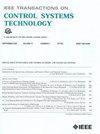加速器的安全极值搜索实验
IF 4.9
2区 计算机科学
Q1 AUTOMATION & CONTROL SYSTEMS
引用次数: 0
摘要
我们在洛斯阿拉莫斯中子科学中心(LANSCE)1 公里长的带电粒子加速器上演示了最近设计的安全极值搜索(Safe ES)。安全极值寻优(Safe ES)是极值寻优(ES)的一种改进,除了最小化分析未知成本外,还采用了基于分析未知控制屏障函数(CBF)安全度量的安全过滤器。由于加速器是大型复杂系统,热效应和退化会导致许多参数漂移,因此有必要进行调整。同时,安全运行(保持状态约束)也至关重要,因为损坏会带来天文数字的成本,包括经济损失和停机时间。我们测量的(但分析上未知的)安全指标是光束电流。我们在三个加速器应用中执行了多变量安全 ES,分别调整了 4、6 和 3 个磁强参数。这三个应用中有两个是针对 LANSCE 的光束线的验证模拟模型:第一个是针对质子射线照相(pRad)光束线的 800-MeV 质子光斑大小调整;第二个是针对高性能代码 HPSim 的低能量光束传输(LEBT)区域的调整,该区域包含一束 750-keV 质子光束。第三项是在 LANSCE 对 LEBT 中的转向磁铁进行实验性调整。本文章由计算机程序翻译,如有差异,请以英文原文为准。
Experimental Safe Extremum Seeking for Accelerators
We demonstrate the recent designs of safe extremum seeking (Safe ES) on the 1-km-long charged particle accelerator at the Los Alamos Neutron Science Center (LANSCE). Safe ES is a modification of extremum seeking (ES) which, in addition to minimizing an analytically unknown cost, also employs a safety filter based on an analytically unknown control barrier function (CBF) safety metric. Tuning is necessitated by accelerators being large complex systems, with many drifting parameters due to thermal effects and degradation. At the same time, safe operation (the maintenance of state constraints) is crucial, as damage brings astronomical costs, both financially and in operation downtime. Our measured (but analytically unknown) safety metric is the beam current. We perform multivariable Safe ES on three accelerator applications, in which we adapt 4, 6, and 3 magnet strength parameters, respectively. Two of the three applications are for validated simulation models of beamlines at LANSCE: the first for the proton radiography (pRad) beamline of 800-MeV protons for spot size tuning; the second on a high-performance code, HPSim, for tuning the low-energy beam transport (LEBT) region that contains a beam of 750-keV protons. The third is an experimental tuning of the steering magnets in the LEBT at LANSCE.
求助全文
通过发布文献求助,成功后即可免费获取论文全文。
去求助
来源期刊

IEEE Transactions on Control Systems Technology
工程技术-工程:电子与电气
CiteScore
10.70
自引率
2.10%
发文量
218
审稿时长
6.7 months
期刊介绍:
The IEEE Transactions on Control Systems Technology publishes high quality technical papers on technological advances in control engineering. The word technology is from the Greek technologia. The modern meaning is a scientific method to achieve a practical purpose. Control Systems Technology includes all aspects of control engineering needed to implement practical control systems, from analysis and design, through simulation and hardware. A primary purpose of the IEEE Transactions on Control Systems Technology is to have an archival publication which will bridge the gap between theory and practice. Papers are published in the IEEE Transactions on Control System Technology which disclose significant new knowledge, exploratory developments, or practical applications in all aspects of technology needed to implement control systems, from analysis and design through simulation, and hardware.
 求助内容:
求助内容: 应助结果提醒方式:
应助结果提醒方式:


